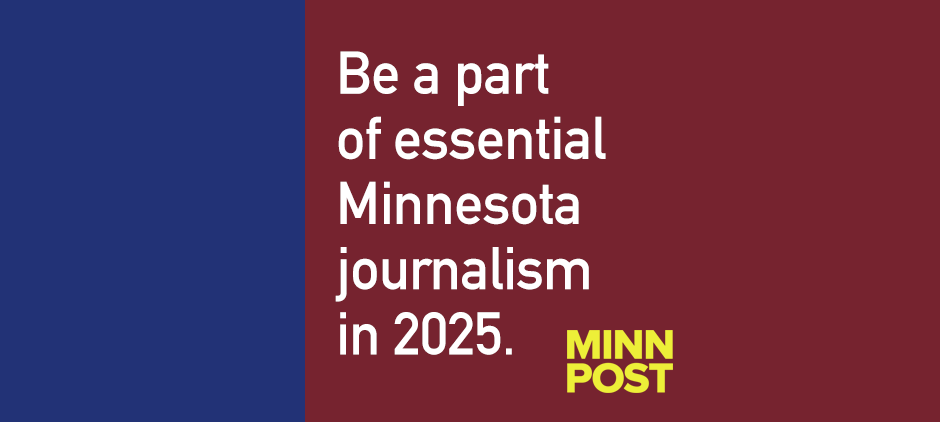It is the gift-giving season, and Wednesday’s Minnesota economic and revenue forecast had something for all the politicians to cherish — DFL and GOP both.
It was the same presentation, one that showed a narrowing surplus for the two-year budget that will be adopted this spring and then a sizable shortfall for the two-year budget after that. If the next Legislature does nothing more than keep current taxes steady and increase spending only in ways required by law, it will have $616 million extra come May. And if the Legislature after that does the same, it will be faced with a hole of $5.14 billion.
Come January, the DFL Senate and the evenly divided House could make both those numbers worse — or better — depending on how they approach budget negotiations. Spend more now and the future deficit gets larger. Spend less now and, well, the opposite happens. In other words, the two budget periods are intertwined in ways that make them hard to separate.
But there is accounting, and then there is politics. After a lengthy presentation by state economists and budget officials, including advice to be cautious in spending and to begin looking at looming deficits soon, DFLers led by Gov. Tim Walz wanted to talk about the surplus part and Republicans had that whole deficit thing top of mind.
“As you can see, Minnesota continues to be in a strong place,” Walz said. “We put money into things that improved people’s lives and built for the future. I’m proud of the work we’ve done together, proud that we have once again made Minnesota a top state for children, for business, for health care and things that enhance the quality of life.”
In addressing future budgets, Walz worried more about what the next Trump administration might do that would affect the economy or reduce federal money flowing to the states. And he cited two expensive and growing areas of state spending that were of special concern — long-term care for vulnerable seniors and special education.

“But as a starting point, this puts us in a good position to do a measured, responsible, bipartisan budget,” Walz said.
Yet GOP leaders — including prospective Co-Speaker Lisa Demuth of Cold Spring, who will break the DFL’s total hold on state government when the next session starts next month — couldn’t resist saying I told you so. While in the minority during the 2023 and 2024 sessions, Republicans could only talk and raise concerns that the DFL was overspending surplus dollars that were mostly one-time. That is, they were produced predominantly by federal pandemic funds to state government as well as the positive impact on the state economy of that money. And while DFLers directed some of that largesse to one-time spending, it also increased the recurring state budget by 28% between the 2022-2023 budget and the current 2024-2025 budget.

But Demuth can do more than talk starting next month. She will share power in the House with current House Speaker Melissa Hortman. Anything that passes to Walz’s desk must have bipartisan support.
“The results that we saw with this budget forecast that came out today is exactly what House Republicans have been warning for the last two years,” Demuth said. “Democrats ignored those warnings from Republicans, they ignored the warnings from their own party’s administration, and now we have that looming $5 billion deficit looming in just a few short years.”
House Republican committee co-chairs will send a letter to all state agencies asking for responses that could help the caucus propose budget cuts. The questions are: what unfilled jobs does the agency have, how many of the new jobs created by the current budget remain open, what leases the agency has in buildings less-than-full due to work-from-home policies, and how many employees are devoted to diversity, equity and inclusion programs.
DFLers did take credit for one number in the current budget that is making the next budget easier to manage. They left $3.7 billion unspent in a two-year budget that will end up spending $71 billion. That money is what allows the next budget to spend $3.1 billion more over the two-year period than state taxes will bring in. It is that leftover money that allows for a small surplus — $616 million — versus a deficit in the short term as well as the long term.
Still, the state is projected to spend $2.2 billion more than it will raise in taxes during the two-year period from July 1, 2025, to June 30, 2027. And that doesn’t include the $926 million estimated cost of covering inflation.

The $3.7 billion left on the bottom line last May, after the sweeping spending in the budget adopted in 2023, came after Walz’s budget office warned last December and February that shortages were coming in the so-called planning years. Minnesota is one of 20 states that looks ahead four years instead of just the period covering the next two-year budget.
The partisan tension displayed Wednesday — and for the two-year-run of the DFL trifecta — is that DFLers maintain that their policies made the state better and made the lives of middle- and lower-income residents better. Republicans ran on a platform that said that while some of the programs are popular, the cumulative impact is growing government and unsustainable budgets.
That left Walz and DFL leaders to defend the programs of the last two years, from child tax credits and universal free school lunch to paid family leave and tax hikes on high-earners, and deflect accusations that they are unsustainable in anything but pandemic times.
Walz responded testily to a question about whether he was downplaying the threats of deficits. After first asking if perhaps his mic hadn’t been on when he spoke of needing responsible budgeting, Walz noted that the state just increased its rainy day fund to almost $3.2 billion even though the current situation is not a rainy day.

“We knew this was coming. We forecast it last time. We know there are decisions that need to be made,” Walz said. “This is not a rainy day. We have time to address this structurally without negatively impacting the services we’re providing people, but it’s going to make some hard decisions.
“This is not like hair on fire,” he said.
Senate Majority Leader Erin Murphy of St. Paul said the next budget negotiations start with that $3.7 billion left unspent and a record rainy day fund.
“For the last two years I joined my colleagues in the House and Senate to do all we could do to improve the lives of Minnesotans. We knew they were struggling with the cost of things,” Murphy said. “Minnesotans’ lives are better and we are better prepared together to weather what we are going to experience in the next two years.”

But the forecast presented Republicans with an “I told you so” moment that was hard to resist.
“Democrat policies have put Minnesota on an incredibly precarious path, long term,” said House GOP deputy leader Harry Niska of Ramsey. “They can talk today about the drivers that are driving state spending, but those are problems they chose not to address when they had a trifecta and a $17.5 billion surplus.
“We’re swinging from that kind of surplus to a $5 billion deficit in three budget cycles,” he said. “How did that happen?”
How did we get here?
The politics came after a presentation by MMN Commissioner Erin Campbell, the state’s new economist, Anthony Becker, and state budget director Ahna Minge. Campbell is a Walz appointee, but these presentations are expected to be nonpartisan. Campbell tried to issue warnings without sounding alarms about the budget that begins in two-and-a-half years — what she terms the planning years because the forecast is meant to give lawmakers and Walz time to prepare.

“Spending decisions that are made this legislative session will have impacts on the planning years, and we are anticipating some challenges in those years,” she said. “It will be especially important for policymakers to take the long view as they make decisions this year.
“Clearly we have to realign the budget so that spending and revenues match,” Campbell said. Another forecast produced in February will officially guide the budget process. By then, Becker said, the state might have a better indication of Trump policies that might hurt the state’s financial picture, such as import tariffs and immigration restrictions, and those that might help, such as federal tax cuts or energy policy changes.
Overall, changes in the economic numbers that are loaded into computer models to arrive at revenue projections are at the heart of a softening in the forecast, they said.

While the projections for growth in the U.S. economy have improved since the February 2024 forecast, expectations for both consumer spending on sales-taxable purchases and total wages and salaries were reduced. For a state that depends on individual income taxes and sales taxes for two-thirds of its revenue, those declines in spending and income matter.
At the same time, the state is projecting continuing increases in the cost of social services and education, which together make up 74% of state spending. Two programs within those budgets are especially critical to the increases – special education programs in schools and disability services including long-term care and disability waivers that allow people to live at home or in their communities rather than in nursing homes.
Campbell said policymakers have one advantage on their side — time. The projected deficit will be in front of legislators in the regular session that begins in January 2027, with an election for governor and both houses of the Legislature coming between now and then.
“The fact that we have plenty of time to do that and we have a lot of information to inform our decision making,” she said. “I am confident that we can address the problem.”









Leave a Reply